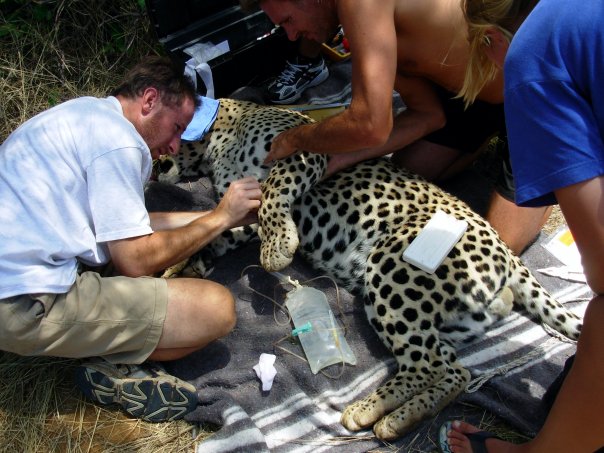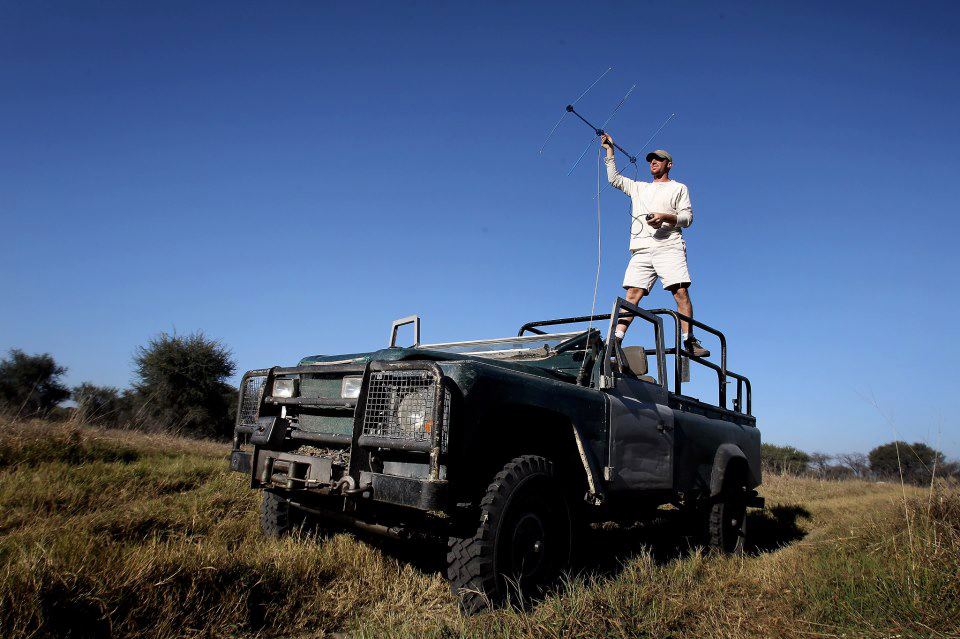Wildlife Biologist Andrew Stein Leads Study of Worldwide Leopard Status
by Solvegi Shmulsky
 Dr. Andrew Stein led a global team of scientists to create a 2015 worldwide leopard assessment, providing the most detailed knowledge of leopard populations to date. Leopards will now join 10,000 other Vulnerable species on the International Union for the Conservation of Nature’s (IUCN) Red List, which also includes Endangered and Extinct species. Stein’s work contributed to changing leopard status worldwide, and it will be featured in a National Geographic story and map this fall.
Dr. Andrew Stein led a global team of scientists to create a 2015 worldwide leopard assessment, providing the most detailed knowledge of leopard populations to date. Leopards will now join 10,000 other Vulnerable species on the International Union for the Conservation of Nature’s (IUCN) Red List, which also includes Endangered and Extinct species. Stein’s work contributed to changing leopard status worldwide, and it will be featured in a National Geographic story and map this fall.
From Northampton, Massachusetts, Stein is an assistant professor of natural science at Landmark College. When he is not teaching or studying large carnivores, he likes to travel, hike, tango, and play basketball. During the academic year, he teaches biology and advises the Environmental Club. Each summer he returns to Botswana to study lions, and he is developing a leopard project. In 2016, he plans to bring a group of students to Botswana. Stein talked with us about his work in advance of the National Geographic publication.
How did you start studying big cats?
Stein: It has been my goal to make a contribution to global leopard knowledge and conservation. In college, study abroad changed my life. I went to Kenya, and this made me realize, "I can do this." I could live in a remote part of Africa and study leopards. At the time, it was an unusual career direction; only about three scientists focused on leopards. Now there are 20 to 30.
Why is information about leopards better in 2015?
Stein: Leopards are secretive, solitary cats so understanding their habits and population changes has been difficult. Better technology today has enabled us to get more accurate information. Motion sensor cameras and internet-supported collaboration among researchers have been key developments. These are the same cameras I use in my biology classes for surveys in Putney conservation areas.
How do you determine leopard population?
Stein: We survey an area to determine low, mid-, high leopard concentration. Then we spot check a few territories, taking pictures with hidden cameras. Leopard spots are unique and we use them to identify individuals in photos, like a finger print. By closely studying key areas, we can extrapolate findings to other similar areas.
Did you make any surprising discoveries?
Stein: Asia’s leopard populations are not as strong as previously thought, and India’s are better. Populations are large but fragmented in Africa—when Africa numbers are better known, the world leopard population will be estimable.
How will these findings help leopards?
Stein: Leopards are going from the category Near Threatened to Vulnerable, which is a step closer to Endangered. Their new status will lead to greater protections in the form of increased limits on hunting and trade. Globally, IUCN is highly influential; 1300 nations and NGO’s are members and follow their recommendations.
What insight would you like to share with college students?
Stein: If you are driven, you can make an impact in your field. I was told by an advisor, "Don’t waste your time on big cats." Well, that was just an opinion, and I didn’t let it stop me. I want students to know how much they can achieve by sticking with their goals.
About leopards
Nine subspecies of leopard have been recognized by the IUCN. The African Leopard is the most numerous, living mainly in Sub-Saharan Africa. Asia and the Middle East are also home to leopards, and the rare Amur leopard lives as far north as Siberia. Males weigh 140 to 200 pounds and females weigh approximately 70 pounds. The lifespan of leopards in the wild is 12 to 17 years. Mothers give birth to two to four cubs, about half of whom survive the first year. Leopards eat prey as small as insects and as large as juvenile giraffe. To protect a food source, leopards are known to hoist remains into a tree, sometimes lifting weight two to three times their own body weight. As with other big cats, leopard populations have declined, leading organizations like the IUCN to promote conservation and the protection of leopards.

.jpg)